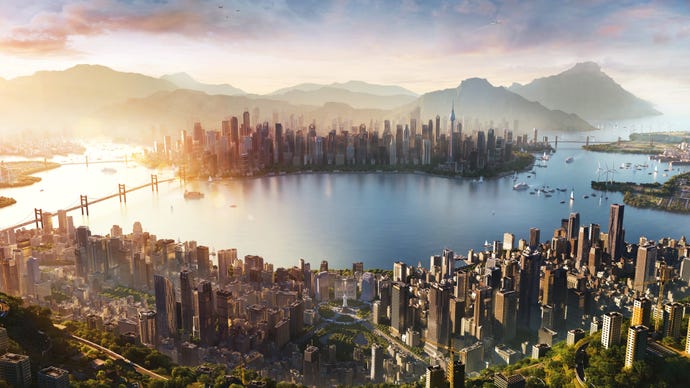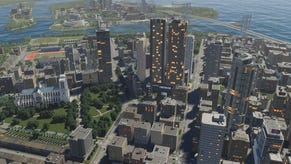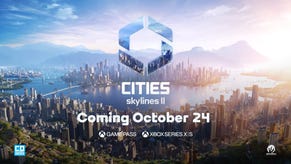At the eleventh hour, Cities Skylines 2 emerges as a GOTY contender in a truly packed year
2023, eh? Will it go down as an all-timer? With games like Cities Skylines 2 up front, it just might.
There’s no better feeling when a game is at preview than the limited-time session simply melting away. I mean, it also sort of sucks when a developer chaperone steps in to tell you that your time is up – but when it feels like you blink and a whole hour goes by, that’s how you know you’re playing some real good stuff. Such was the case for my first hands-on with Cities Skylines 2.
Now, I know what you’re thinking: crikey, that headline is a big strong. Game of the Year? In a Zelda year? Against Baldur’s Gate?! And, yeah – it’s probably a bit hyperbolic. But if we could hop into the future and ask future Alex exactly which of 2023’s games he’s played the most of and had the most joy from, it’s probably going to be Cities Skylines 2 or Street Fighter 6. How many play-throughs of BG3 I do, or how many more hundreds of hours I sink into Starfield or Cyberpunk are irrelevant – I know this game is going to eat my life.
Full disclosure: I know this in part because I have hundreds upon hundreds of hours logged on the original Cities Skylines. But that is no guarantee that a sequel is going to be good – especially when a sequel involves wiping away years of improvements delivered via expansion packs and mods. Things can go badly wrong. But after fiddling with it for slightly over an hour, I’m convinced Cities Skylines 2 is on the right path. The best path.
It’s a risky equation with a game like this. The original Skylines has basically become a service game, getting a constant flow of fully-fledged expansion packs but also smaller add-ons. Steam flags up 62 DLCs for the game, and I own ‘em all, the mug that I am. Even the music add-ons. Saying goodbye to all of that is no small thing – and so developer Colossal Order has to offer something significant for fans to be willing to accept a reset.
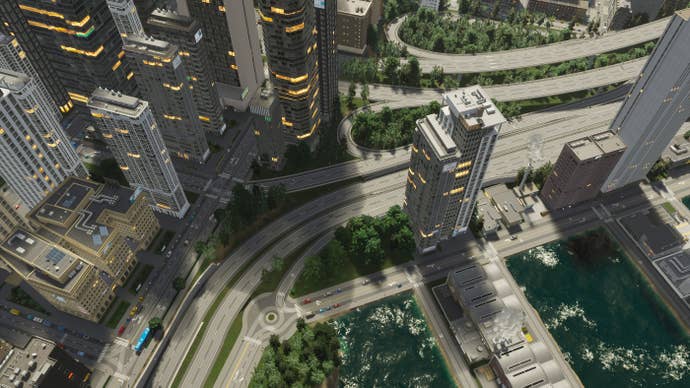
What they’re offering, basically, is scale. On both a macro and micro level. Its maps are huge; around five times bigger than the first game. You’ll be able to create bigger cities with more stuff, and a more dense simulation – sure thing. But actually, the micro stuff is perhaps the more interesting element.
Everything has been broadly re-thought. Even placing roads is both simplified with new tools and options for automatically creating US style grid setups in just a few clicks and complicated by even more detailed levels of adjustment possible for those who really want to get into the weeds. Utilities (like electricity) now flow up and down roads beneath the ground, which means there’s less need to mess about with specific electric cabling, but there’s far more granularity in how those utilities function and are sourced.
Even the simulation of individual citizens is more in-depth, where you’ll be surprised at how much detail there is if you click on a specific person and follow them on their daily routine. You’ve got more control on what kind of buildings appear in your city’s residential, commercial, and industrial zones – both in terms of their functionality and their look. You can create neighborhoods with a specific visual flair. In this demo, I was able to choose between North American or European stylings, and you can see where this will go with mods and the like in the future. You’ll actually be able to designate and zone a specific ‘Chinatown’ district, for instance – and have it look authentic.

The sense of scale has been adjusted as well, and some additions are just… plain smart. Take landfill, or cemeteries. In the first game, you’d place a landfill or cemetery with a set capacity, and once it was full of trash or the dead, you’d have to build another or find a way to free up some room, like by firing up a polluting furnace. In Skylines 2, these sorts of utility buildings can be expanded. So, rather than have to build another, you can just designate more space around the building to that purpose, meaning you just have one bigger version rather than multiple spread across your city and ruining its look.
A lot of buildings are upgradable in this way, from sprawling shopping malls to police and fire stations, or schools. The scale of these buildings is much improved, too – where a university that teaches thousands of pupils in Cities Skylines might have the footprint of 3 or 4 large residential houses, in Skylines 2 they can now be absolutely enormous. It adds to the 'wow factor' of adding these sorts of buildings to your fledgling cities, which is just bloody satisfying.
Ultimately, this is still a city simulation. A simmed city. You know. Cities Skylines 2 isn’t going to reinvent the wheel. It doesn’t need to. But what it appears to be doing is delicately and cooly iterating on what came before, improving it, and doing so with a fulsome knowledge that they’re not just building a game – they’re building a platform.
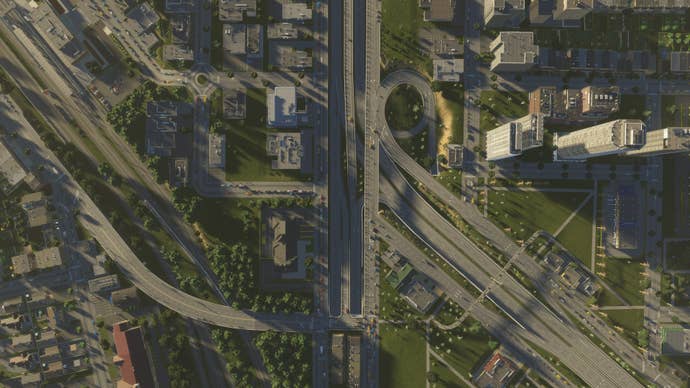
My blink-and-it’s-over hands-on with Cities Skylines 2 proved to me that it’s going to have more than enough about it at launch to keep me occupied for many, many hours. But I’d be lying if I said that a huge part of my anticipation for it wasn’t thinking about where it might go.
I look at the first game and see a title utterly transformed over the years by fans and developers alike – and in its sequel, I see a game built to invite the same sort of expansionism. Better still, I see a game with systemic hooks that should mean that those expansions are even better this time around. I can’t wait to play the full thing in October.
Cities: Skylines 2 launches on October 24, 2023 on Xbox Series X|S, PS5, and PC.
